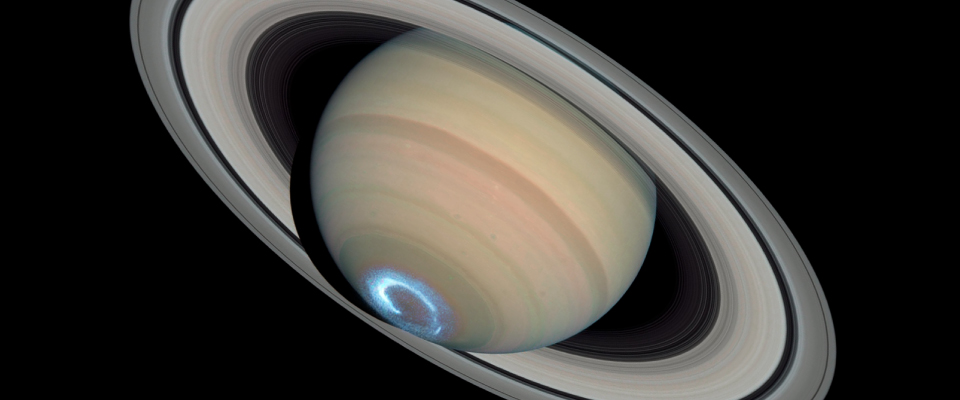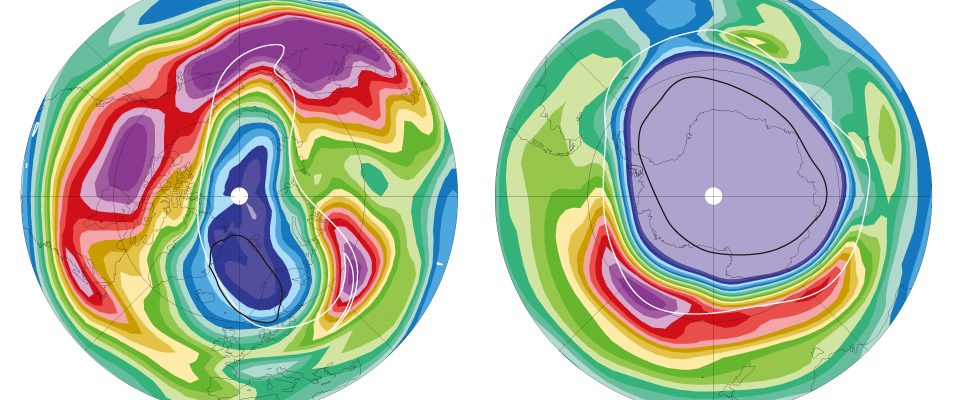土星オーロラ電波の研究

土星はSKR(Saturn kilometric radiation)と呼ばれる100-400 kHzにピークを持つ電波を放射しています.この電波は極域のオーロラ加速域で磁力線に沿って電子が加速されるときに,非熱的な過程によっておおよそローカルな電子のサイクロトロン周波数で放射されると考えられています.この特徴により,SKRのスペクトルから,オーロラ加速域の高度を推測することができます.このリモートセンシングツールとしての特徴は,SKRと放射機構が同様である地球のAKR(auroral kilometric radiation)ではよく知られています.SKRは多くのユニークな特徴を持っています.例えば,SKRの強度は周期である周期変動していますが,その周期が南北で非対称であり,さらにそれは経年変化も伴います.加えて,土星磁気圏の磁場やオーロラなどの現象にも同じような周期性が発見され,土星の磁気圏研究におけるホットトピックスとなっています.本研究では,そのような多様な現象の中から,土星における”substorm-like”な現象に伴って起きると考えられている,SKRスペクトルの低周波数への拡大に着目しています.サブストームに伴って電波のスペクトルが過渡的に変化する現象はAKRにおいてすでに研究が進んでいます.このスペクトルの変化はオーロラ加速域の高度分布が拡大している様子と理解できます.本研究は土星探査機Cassiniによって観測された高時間分解能のスペクトルデータを用いることによって,土星のオーロラ加速域の過渡的発展を調べることを目的としています.さらに最終的には,沿磁力線電流などとの関連データを調査し,また地球で得られている知見と比較検討することにより,土星のオーロラ加速域の生成および変動プロセスの包括的理解に貢献したいと考えています.
Saturn emits the radio emission called Saturn kilometric radiation, SKR which has a spectral peak between 100 and 400 kHz.Since this radio emission is thought to be emanated at about local electron cyclotron frequency via non-thermal process by acceleration along auroral field line, You can deduce an altitude distribution of the auroral acceleration region at Saturn. It is also known well that auroral kilometric radiation can be used as a remote sensing tool for measuring the auroral acceleration region. SKR has a lot of unique characteristics. For instance, SKR intensity from the northern hemisphere and from southern hemisphere vary at different frequencies. And these frequency change with time. Furthermore, similar modulations of aurora, magnetic field and ENA are reported. They are now hot topics of studies on Saturnian magnetosphere. In this study, We focus on a transient lower-frequency extension of SKR accompanied with “substorm-like event”. The transient change in AKR dynamic spectra is well-researched and can be regarded as the vertical extension of the auroral acceleration region. We intents to go over the transient evolution of the Saturnian auroral acceleration region using high time resolution spectral data obtained by Cassini, the only Saturn orbiter. Finally we hope that we will contribute to a comprehensive understanding for the process of the generation and the variation of the Saturnian auroral acceleration region by checking the relation with other physical quantity and comparing with the knowledge about Earth’s case.





